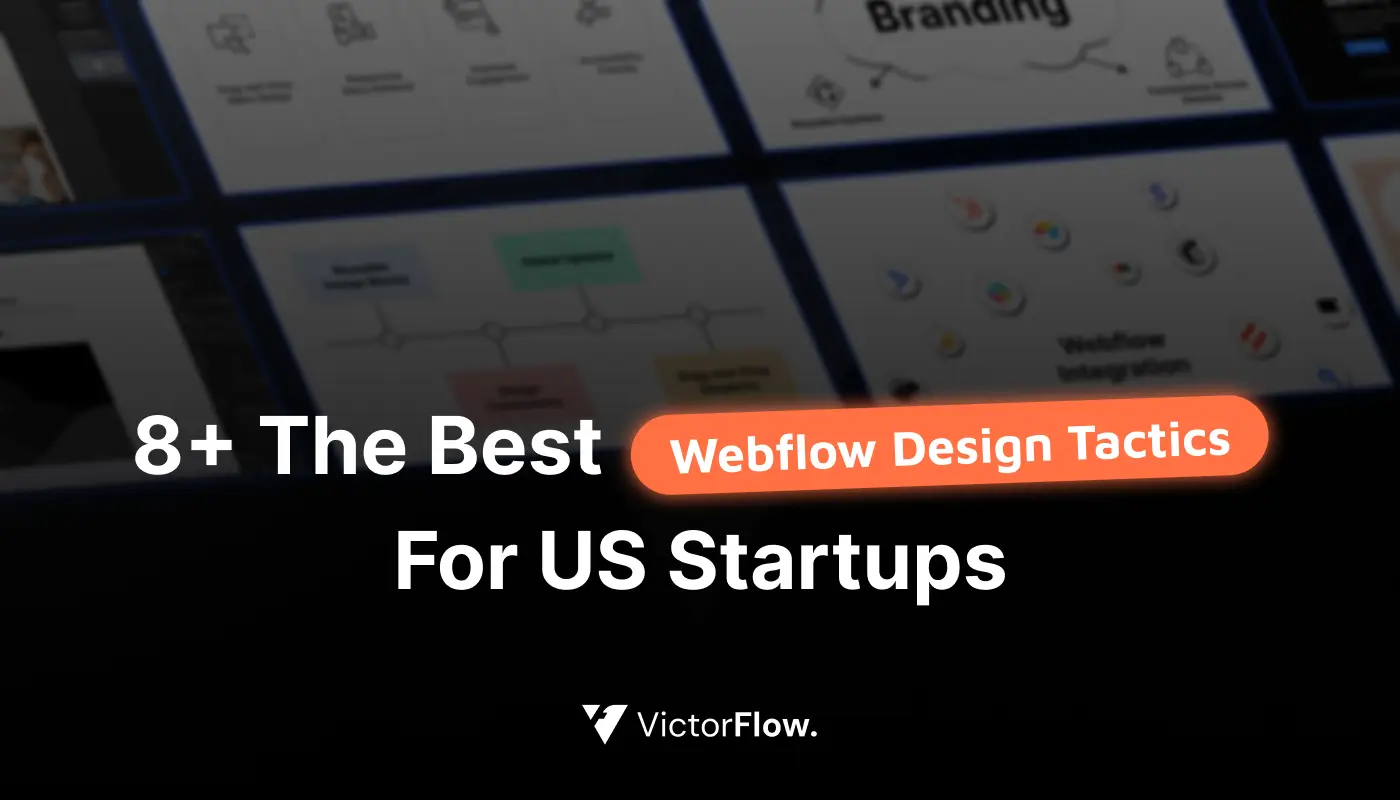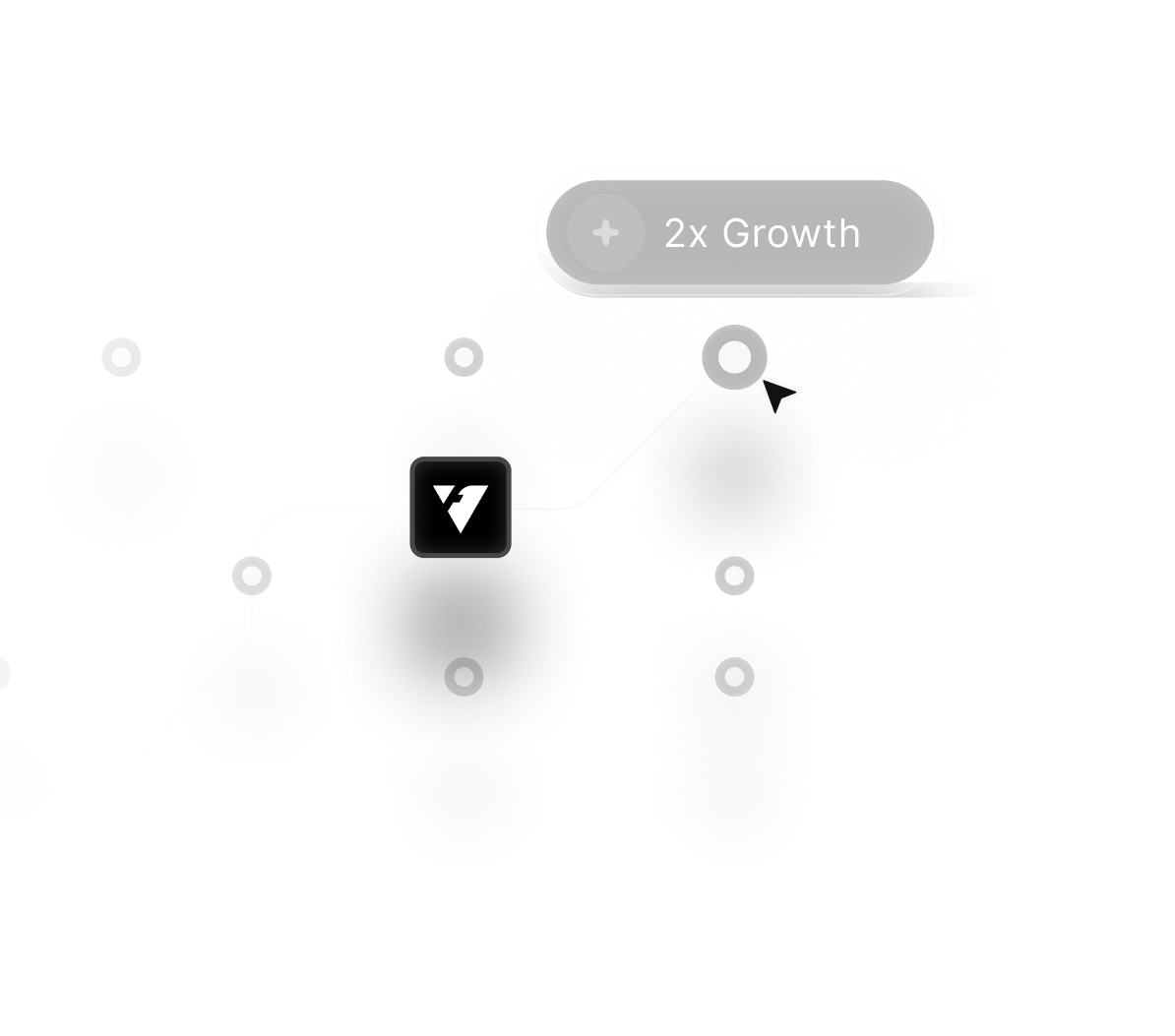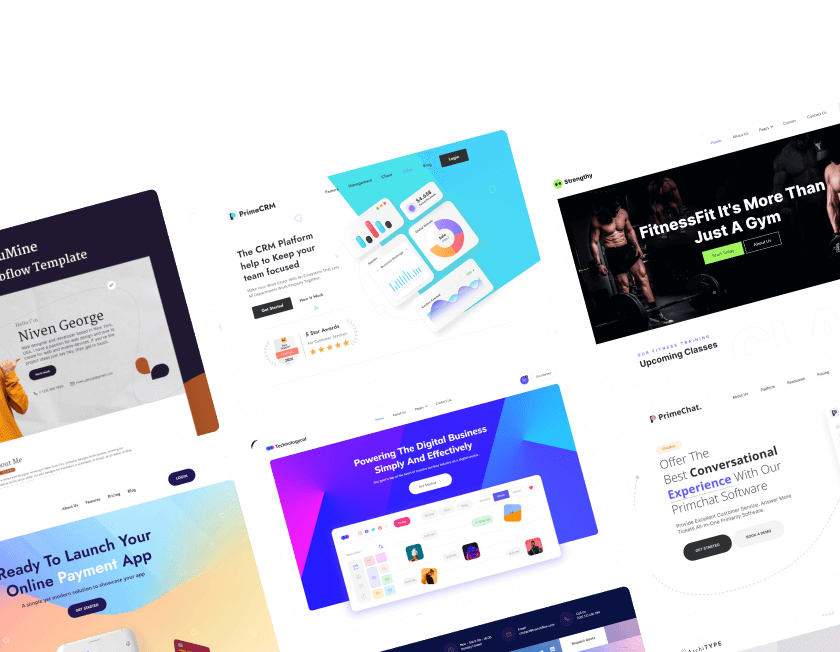
Designers can save time by using plugins that convert Figma layouts directly into Webflow-friendly code efficiently. This approach minimizes manual adjustments and ensures pixel-perfect replication of every element in Webflow projects.
Plugins automate repetitive tasks, allowing teams to focus more on creativity and functional improvements rather than coding. Responsive design is preserved during conversion, keeping layouts adaptive across multiple screen sizes and devices easily.
Using Figma-to-Webflow plugins helps maintain consistency in typography, colors, and spacing, reducing human errors. Collaboration between designers and developers improves since outputs are ready for immediate implementation in Webflow.
Animations and interactions can often be transferred seamlessly, saving effort in recreating dynamic elements manually. Regular updates to plugins ensure compatibility with the latest Figma and Webflow versions for smooth workflows.
Integration of plugins supports exporting design assets like images and icons, maintaining clarity and resolution for production. Optimized workflows help agencies and teams deliver faster turnaround times while preserving quality and design integrity.
"Speed up your design-to-development process using plugins.
Claim a complimentary expert session today."
Table of Contents
- What is the Figma to Webflow Plugin?
- Installing and Authorizing the Webflow from Figma Plugin
- How Does the Plugin Work?
- How to Install and Use the Figma to Webflow Plugin?
- How can I remove the to Webflow from the Figma plugin?
1. What is the Figma to Webflow Plugin?

The plugin converts Figma layers into the HTML and CSS code that Webflow produces when you graphically build your website.
The plugin currently supports the following translations:
- Typography styles for Auto Layout
- Border designs, Shadow designs
- Images for the background and linear gradients
- SVG vector and shape conversion
- Images
- Opacity
- Position in Absolute terms.
2. Installing and Authorizing the Webflow from Figma Plugin
To use the Figma to Webflow plugin, you must first sign up for a Figma account. The plugin may then be installed:
- Click on the Figma to Webflow plugin's website.

Click Try it out, and you'll be sent to a new Figma design file and a plugin modal window will appear.

- In the plugin modal window, click Run.

- Connect account
If you haven't already logged into Webflow, a new browser tab will open with your Webflow credentials. Then you'll be brought to the App authorization page, where you may approve the plugin using your Webflow project account and use the plugin's features.
Remember that if you allow the plugin for a single site, you will only be able to uninstall it from that site's settings. If you authorize the plugin for a Workspace, the plugin will be removed from your Workspace settings.

How to include or exclude sites from plugin authorization:
To add or withdraw the plugin authorization from a new or existing site, follow these steps:
- In the plugin modal box, select the "hamburger menu."
- Choose to Log out.
- Follow the instructions in the plugin's modal window.
- Connect your account
- Choose all of the sites to which you wish to add or withdraw the plugin authorization.
3. How Does the Plugin Work?
When utilizing the webflow from the Figma plugin with any of the following, keep the following points in mind:
- Auto Layout
- Custom fonts
- Classes
- Images
- HTML tags
- Backgrounds
Auto Layout
You can only copy and paste layers that utilize Auto Layout. When copying from webflow from Figma, this ensures the best translation possible.

Custom fonts
If you're using custom fonts in your Figma designs, you'll need to submit them to your Webflow site first to guarantee the fonts transfer correctly. Custom fonts will be lost during the transfer if they are not added to Webflow. Discover how to add custom fonts to your Webflow pages.
Illustrations and Icons
Figma is a vector tool for making graphics, icons, and vector logos. The majority of drawings are made up of many vector layers. These layers are exclusive to Figma and other vector tools, and thus are difficult for the plugin to understand, resulting in timeout issues.
If your design has vector layers, the plugin will automatically generate a new vector parent layer called the "Vectors wrapper." This wrapper will enclose your vector layers so that they may be exported to SVG.
After the copy procedure is complete, the plugin will erase this layer in Figma, but it will remain to exist in Webflow.
If your vector layer contains Figma components, you may need to remove instances before duplicating the layer. If this is the case, the plugin will notify you that the instance must be detached.
Detach instances rapidly by pressing Option + Command + B (on Mac) or Control + B (on Windows) (on Windows).

Classes
When you copy a design from Figma to Webflow, every layer name in Figma is turned into a class.
When converting layer names to classes, the plugin does the following three changes:
- Lowercase them (for example, "button" becomes "button").
- Replaces spaces with hyphens (for example, "amazing button" becomes "awesome button").
- Removes any class names with more than 20 characters.
Images
When you paste an image-based design, the pictures are posted to the WebflowAssets panel. If you don't pick the proper site in the Choose Webflow site dropdown in the plugin modal box, your photographs will not upload to the Assets panel.
HTML tags
Following a few principles, the plugin estimates the right HTML tag for each Figma layer:
- Anchor tag: If the layer name contains the word "button," the layer will be exported as an HTML anchor tag (i.e., "a>").
- If the layer name contains the words "description," "text," or "paragraph," the layer will be exported as an HTML paragraph tag (i.e., "p>").
- Heading tag: If the layer name contains the word "heading," the layer will be exported as an HTML H1 tag (i.e., "h1>").
However, define the layer explicitly if you wish the plugin to export it as a separate HTML tag.
Creating HTML tags by hand
The HTML tag for each Figma layer may be defined by renaming the layer and prepending the tag name inside brackets, followed by two hyphens (i.e., "[H1]—the layer name").
The following HTML tags are supported by the plugin:
- H1
- H2
- H3
- H4
- H5
- H6
- P
- A
- Div

Backgrounds
The plugin supports solid, linear, and picture backgrounds for auto layout and text layers.
Notes on the Plugin
The plugin translates the specified Figma layer's styles and layout to HTML tags and CSS attributes by parsing it. To achieve the most accurate conversion, the plugin only allows auto layout.
4. How to Install and Use the Figma to Webflow Plugin?
- Layouts for Webflow plugins may be created with Figma.
- Use Figma to create Webflow plugin architectures.
- Copy and paste your Figma designs

Layouts for Webflow plugins may be created with Figma.
The plugin offers pre-built responsive layouts to help you launch your designs for navbars, hero sections, footers, and many other popular design components.
To duplicate a layout from to webflow from Figma, do the following:
- In the to webflow from Figma plugin modal window, navigate to the Layouts tab.
- Select a design.
- On the Figma canvas, select layout.
- In the to webflow from Figma plugin modal window, select the Webflow site to which you wish to paste your layout from the Choose Webflow site menu.
- In the Figma to Webflow plugin modal window, choose Copy to Webflow.
- Launch the Webflow Designer in a new window.
- Copy the layout and paste it into the Webflow Designer canvas.
You will only need to select your Webflow site from the Choose Webflow site option once. Then, using your Figma file, you may copy and paste various structures into Webflow.

Use Figma to create Webflow plugin architectures.
Figma is a strong design tool that offers consumers a comprehensive set of plugins and connectors for creating excellent web apps. Developers may use Figma to design extensive architectures for creating Webflow plugins.
Copying a structure from Webflow to Figma:
- In the Figma to Webflow plugin modal box, navigate to the Structures tab.
- Select a structure.
- On the Figma canvas, choose the structure.
- From the Choose Webflow site option in the to webflow from Figma plugin modal box, pick the Webflow site into which you want to paste your structure.
- In the Figma to Webflow plugin modal window, choose Copy to Webflow.
- Copy the structure and paste it into the Webflow Designer canvas.


You will only need to select your Webflow site once from the Choose Webflow site option. Then, you may copy and paste several structures from your Figma file into Webflow.
Copy and paste your Figma designs
You may also copy and paste your designs from Figma into Webflow. First, ensure that all frames are set to the auto layout. Detach component instances as needed to guarantee you can change the design in Webflow. Detach instances rapidly by pressing Option + Command + B (on Mac) or Control + B (on Windows) (on Windows).
The design is then ready to be copied:
- On the Figma canvas, choose the design (and all of its layers).
- In the to webflow from Figma plugin modal window, select the Webflow site into which you wish to paste your design from the Choose Webflow site menu.
- In the to webflow from Figma plugin modal window, choose Copy to Webflow.
- Copy the design and paste it into the Webflow Designer canvas.
You will only have to select your Webflow site from the Choose Webflow site option once. Then, using your Figma file, copy and paste numerous designs into Webflow.
5. How can I remove the to Webflow from the Figma plugin?

Removing the Figma to Webflow plugin might be terrifying for those who have never done it before, but with the appropriate techniques, it can be done quickly. Follow these procedures to guarantee that the plugin is removed successfully and without incident.
How to remove the Workspace Plugin
To remove the Figma to Webflow plugin from your workspace, follow these steps:
- In the navbar, select the Account dropdown.
- Select Workspaces.
- Go to Workspace settings > Integrations tab > Select the Workspace from which you wish to delete the plugin. Approved applications
- From the "Webflow from Figma to Site" application, select Revoke.
How to Remove the Plugin from Your Website
To remove the Figma to Webflow plugin from your site, follow these steps:
- Go to your Dashboard.
- Click the "three disclosure dots" on the site from which you wish to delete the plugin, then click Settings.
- Go to Site Settings > Integrations > Approved applications
- Account integration settings may be accessed by clicking View.
- Click on Account Settings > Authorized Apps.
- From the "Webflow from Figma to Site" application, select Revoke.
You may look at more connected to this to simplify things and collect additional knowledge.
Conclusion
Plugins create a smooth workflow to convert Figma designs into functional Webflow projects quickly and reliably. Automation reduces repetitive coding tasks, allowing designers to focus more on creative refinements and UX improvements.
Accuracy and consistency are maintained across layouts, typography, and color schemes during the conversion process. Responsive layouts are preserved, ensuring websites look great on all devices without extra adjustments manually.
Time savings increase efficiency, making design handoffs and development cycles faster and more predictable overall. Seamless export of assets ensures that images, icons, and interactive elements retain their quality and clarity.
Teams can collaborate effectively using plugin-assisted workflows, improving delivery speed and project consistency. Smart conversion tools allow for easier updates and iterations, reducing rework and enhancing project scalability.
Adopting these tools helps create a professional and polished Webflow website directly from Figma designs efficiently.

FAQ
1. Which plugin is best for converting Figma to Webflow?
Popular choices include Anima, Figma to Webflow, and TeleportHQ, each offering responsive design support.
2. Do plugins maintain responsive layouts during conversion?
Yes, most plugins preserve responsiveness, ensuring designs adapt seamlessly across devices and screen sizes.
3. Are animations and interactions transferable?
Many plugins support basic animations, though complex interactions may need slight adjustments after conversion.
4. How accurate is the design replication?
Pixel-perfect conversion is generally achievable, preserving spacing, typography, colors, and component structures.
5. Can plugins export assets like images and icons?
Yes, plugins often export assets with high resolution, maintaining quality for immediate use in Webflow projects.
6. Do I need coding knowledge to use these plugins?
Minimal coding skills are needed; most plugins handle the majority of conversions automatically, simplifying the workflow.
Table of Contents
Choose Our Service, Grow Fast!
Follow Us
Related Posts
.png)
December 11, 2025
Webflow and Framer templates deliver modern layouts, fast performance, and flexible customization, offering creators polished designs that elevate branding and user experience instantly.
Webflow and Framer templates deliver modern layouts, fast performance, and flexible customization, offering creators polished designs that elevate branding and user experience instantly.

%202025.webp)
Discover the 40+ best Webflow templates for 2025, featuring top free & paid options perfect for web design, including the best free and premium Webflow website templates.
Discover the 40+ best Webflow templates for 2025, featuring top free & paid options perfect for web design, including the best free and premium Webflow website templates.


Unlock the best Webflow web design & development tactics tailored for US startups. Boost conversions, enhance UX, and scale faster with proven 2025 strategies.
Unlock the best Webflow web design & development tactics tailored for US startups. Boost conversions, enhance UX, and scale faster with proven 2025 strategies.

Ready to Scale Your Project to the Next Level?
Let's take your project to new heights, reach out and see how we can help you.




















